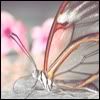Post by Revenge on Apr 13, 2009 21:56:17 GMT -5
This thread gives you a list of animals that are allow to be roleplay here on Eora xx. If you find an interest on one of the animals, you may click it to bring you to the thread of the species. Have fun and choose wisely. Where this is alot of species of one type of animal, you may choose that species. Such as a wolf. You may have a mane wolf or whatever. But, if it's a threatened/rare/endangered species, you must get permission first.[/color]
Key:
- Any bullet in this color is allow to be use without permission.
- Any bullet in White is a rare/threatened species. You must ask me first to make a character of this species.
[/li][li] Any bullet in Red is an endangered species. You must ask me first to make a character of this species.[/color]
[/li][/ul][/size]
Mammals (formally Mammalia)
Information on this group: Mammalia are a class of vertebrate animals whose name is derived from their distinctive feature, mammary glands, with which they feed their young. They are also characterized by the possession of sweat glands, hair, three middle ear bones used in hearing, and a neocortex region in the brain.
Except for the five species of monotremes (which lay eggs), all mammals give birth to live young. Most mammals also possess specialized teeth, and the largest group of mammals, the placentals, use a placenta during gestation. The mammalian brain regulates endothermic and circulatory systems, including a four-chambered heart.
There are approximately 5,400 species of mammals, distributed in about 1,200 genera, 153 families, and 29 orders. Mammals can range in size from the 30–40-millimetre (1.2–1.6 in) Bumblebee Bat to the 33-metre (110 ft) Blue Whale.
Click on One
[/color]
[/li][li] Bear[/color]
[/li][li]Bobcat
[/li][li] Caribou
[/li][li] Cheetah
[/li][li] Cougar[/color]
[/li][li] Deer
[/li][li] Fox
[/li][li] Horse[/color]
[/li][li] Hyena
[/li][li] Killer Whale
[/li][li] Lemur
[/li][li] Leopard[/color]
[/li][li] Lion[/color]
[/li][li] Meerkat
[/li][li] Ocelot[/color]
[/li][li] Raccoon
[/li][li] Tiger
[/li][li] Wolf[/color]
[/li][li] Wolverine
[/li][li] Zebra
[/li][/ul][/blockquote]
Birds (class Aves)
Information on this group: Aves are winged, bipedal, endothermic (warm-blooded), vertebrate animals that lay eggs. There are around 10,000 living species, making them the most numerous tetrapod vertebrates. They inhabit ecosystems across the globe, from the Arctic to the Antarctic. Birds range in size from the 5 cm (2 in) Bee Hummingbird to the 2.7 m (8 ft 10 in) Ostrich.
Modern birds are characterised by feathers, a beak with no teeth, the laying of hard-shelled eggs, a high metabolic rate, a four-chambered heart, and a lightweight but strong skeleton. All birds have forelimbs modified as wings and most can fly, with some exceptions including ratites, penguins, and a number of diverse endemic island species. Birds also have unique digestive and respiratory systems that are highly adapted for flight. Some birds, especially corvids and parrots, are among the most intelligent animal species; a number of bird species have been observed manufacturing and using tools, and many social species exhibit cultural transmission of knowledge across generations.
Many species undertake long distance annual migrations, and many more perform shorter irregular movements. Birds are social; they communicate using visual signals and through calls and songs, and participate in social behaviours including cooperative breeding and hunting, flocking, and mobbing of predators. The vast majority of bird species are socially monogamous, usually for one breeding season at a time, sometimes for years, but rarely for life. Eggs are usually laid in a nest and incubated by the parents. Most birds have an extended period of parental care after hatching.
Click on One
[/color]
[/li][li] Hawk
[/li][li] Owl
[/li][/ul][/blockquote]
Reptiles (class Reptilia)
Information on this group: Reptilia are air-breathing, cold-blooded vertebrates that have skin covered in scales as opposed to hair or feathers. They are tetrapods (having or having descended from vertebrates with four limbs) and amniotes, whose embryos are surrounded by an amniotic membrane. Modern reptiles inhabit every continent with the exception of Antarctica, and four living orders are currently recognized:-Crocodilia (crocodiles, gavials, caimans, and alligators): 23 different species
-Sphenodontia (tuatara from New Zealand): 2 different species
-Squamata (lizards, snakes, and amphisbaenids ("worm-lizards"): approximately 7,900 species
-Testudines (turtles, tortoises, and terrapins): approximately 300 species
The majority of reptile species are oviparous (egg-laying) although certain species of squamates are capable of giving live birth. This is achieved, either through ovoviviparity (egg retention), or viviparity (offspring born without use of calcified eggs). Many of the viviparous species feed their fetuses through various forms of placenta analogous to those of mammals with some providing initial care for their hatchlings. Extant reptiles range in size from a tiny gecko, Sphaerodactylus ariasae, that grows to only 1.6 cm (0.6 in), to the saltwater crocodile that may reach 6 m in length and weigh over 1,000 kg.
Click on One
[/color]
[/li][li] Snake
[/li][/ul][/blockquote]
Fish (Paraphyletic group)
Information on this group: A paraphletic is any aquatic vertebrate animal that is typically ectothermic (or cold-blooded), covered with scales, and equipped with two sets of paired fins and several unpaired fins. Fish are abundant in the sea and in fresh water, with species being known from mountain streams (e.g., char and gudgeon) as well as in the deepest depths of the ocean (e.g., gulpers and anglerfish).
Fish are of tremendous importance as food for people around the world, either collected from the wild (see fishing) or farmed in much the same way as cattle or chickens (see aquaculture). Fish are also exploited for recreation, through angling and fishkeeping, and are commonly exhibited in public aquaria.
Click on One
[/blockquote][/size]
Information © Wikipedia


